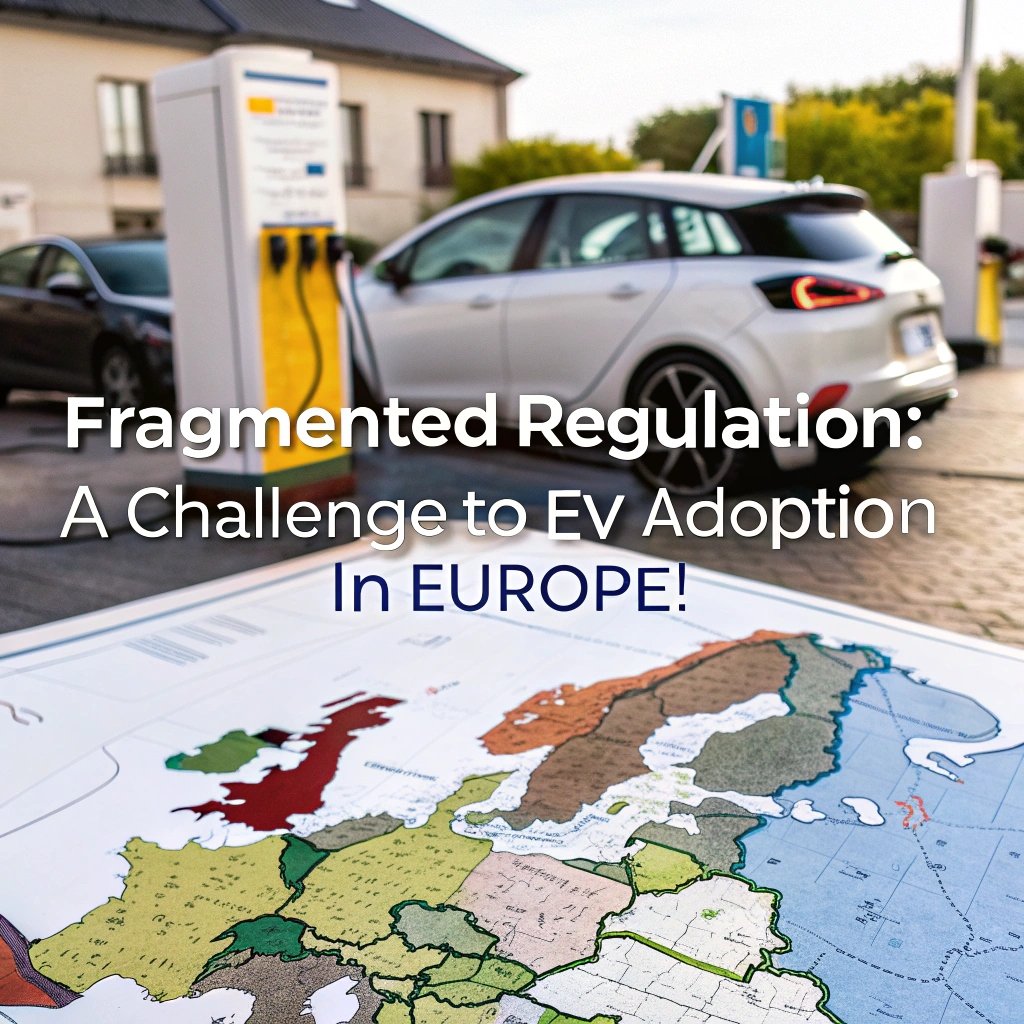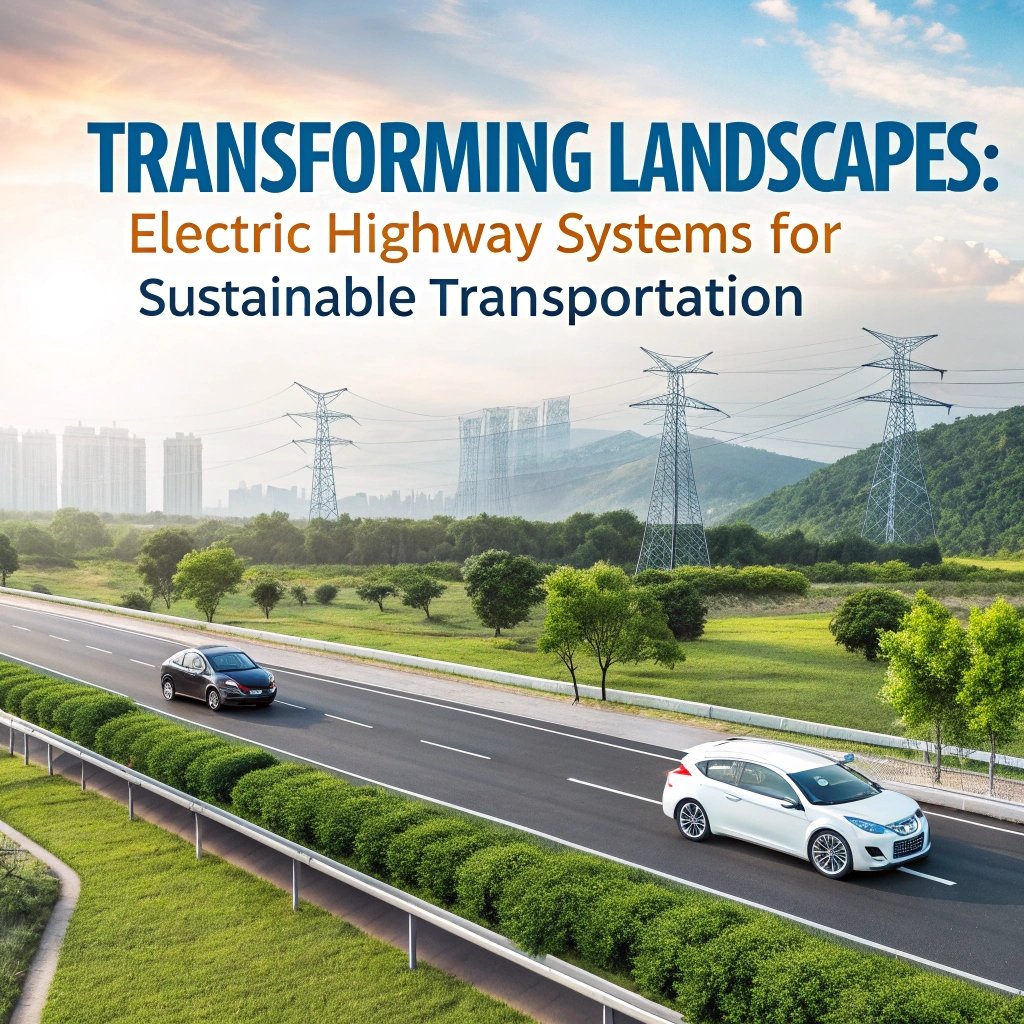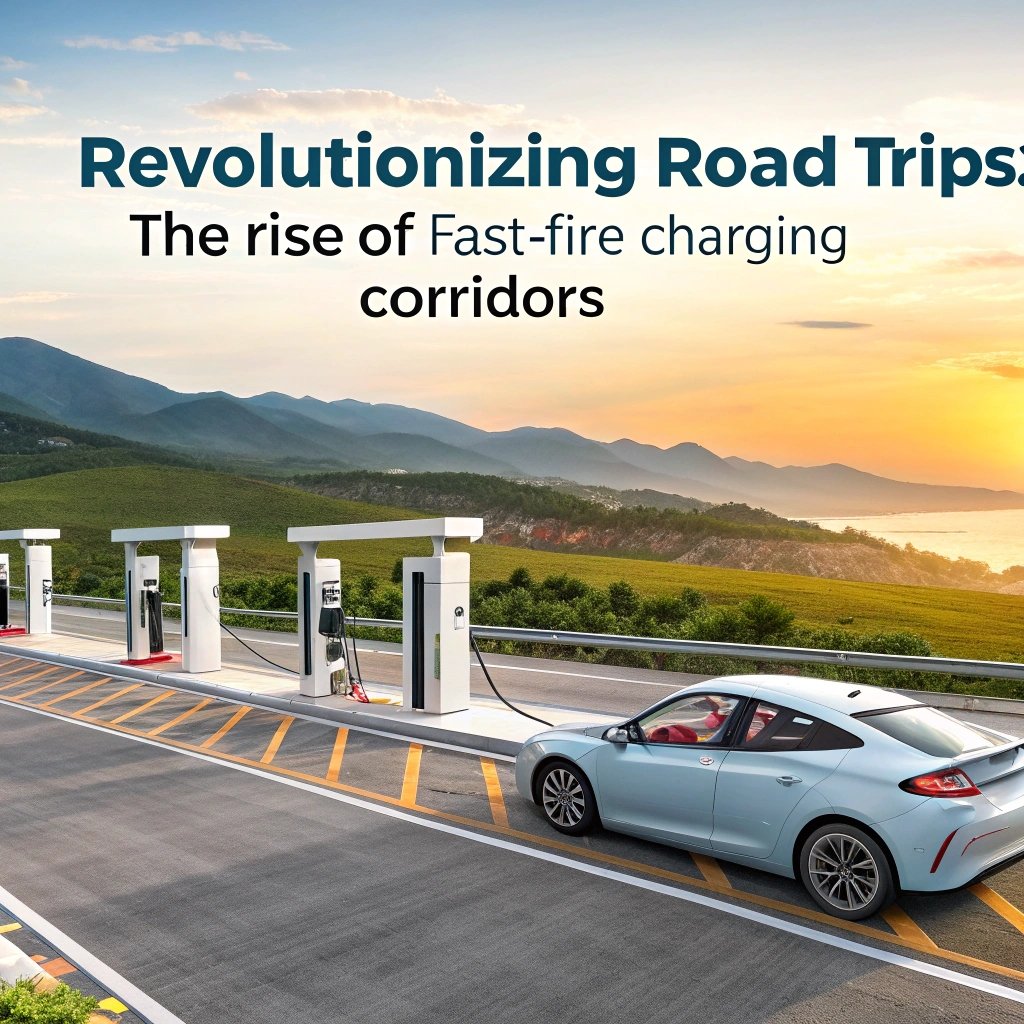As governments around the world push for a more sustainable future, one thing is becoming increasingly clear – Electric Vehicles (EVs) are not just the wave of the future, they’re already here.
But despite their undeniable advantages over internal combustion engines, widespread adoption has been slow to materialize in many countries. A major obstacle? Fragmented regulation across different regions and countries.
The result is a patchwork of rules that hinder EV adoption, create confusion for consumers and businesses alike, and limit the potential benefits of this clean energy technology.
In this piece, we’ll delve into the complexities of regulatory frameworks in Europe and explore why they pose a significant challenge to mass-market acceptance. By examining specific countries’ approaches – from Germany’s strict emission standards to Norway’s favorable tax incentives – our goal is not only understanding what works but also identifying areas for improvement.
The Fragmented Regulatory Environment
Navigating fragmented regulation is a significant challenge for widespread EV adoption in Europe. The regulatory environment can be complex and disjointed, creating uncertainty and confusion.
Different countries have varying policies on electric vehicle taxes, grants, or other incentives that affect the market’s dynamics. This creates an uneven playing field where manufacturers must navigate multiple regulations to establish a presence in each country. It’s as if there are different rules for driving across the continent – a confusing experience that can discourage businesses from making significant investments.
A lack of consistency also hinders progress, leading to inefficiencies and duplicated efforts. Each region has its own set of guidelines, which may not be aligned with one another or even with EU standards. This creates an environment where it’s difficult for companies to keep up with changing regulations, weighing on their bottom line and discouraging investment in the sector.
Furthermore, this fragmented regulatory landscape can lead to confusion among consumers, who are unsure about what options are available in different countries. The result is a lack of clear direction for EV adoption, which undermines its potential as a key driver for sustainable development.
Different National Approaches to EV Charging Infrastructure

Many European nations are struggling to create an effective framework for Electric Vehicle (EV) adoption, which can be attributed to their varied regulatory landscapes. The transition to electric vehicles in Europe is a complex process that requires understanding how each country addresses charging infrastructure.
Take Luxembourg as an example, where the emphasis lies in offering extensive investment into infrastructure development. This comprehensive approach prioritizes government-funded initiatives that support private sector investments. In stark contrast, Germany focuses on setting ambitious targets and providing generous incentives for businesses involved in charging station installation. For instance,a 2 billion public-private partnership was established to develop EV charging networks across the country.
Meanwhile, Norway’s approach is centered around publicly funded investment into extensive network development alongside private partnerships with major companies. This strategy not only accelerates the adoption of electric vehicles but also reflects the country’s ambitious goal to achieve net-zero carbon emissions by 2030. Critics, however, argue that this focus on public funding may increase energy consumption and compromise Norway’s own efforts towards sustainability.
The difference in approaches can be seen in various regulatory measures implemented by different countries. Some nations place restrictions on fossil fuel-powered vehicle sales while others provide tax incentives for EV purchases. For example, France introduced a congestion tax aimed at reducing emissions from traffic, which has led to increased demand for electric vehicles and incentivized manufacturers to expand their production lines.
This disparity highlights the need for each country to tailor its policy framework according to its unique economic landscape. While some countries prioritize public investment in infrastructure development, others focus on providing incentives for businesses involved in charging station installation or implementing emission-reducing policies. Ultimately, it is crucial that European nations work together and share best practices to create an environment conducive to EV adoption.
To illustrate the effectiveness of these approaches, consider this: In Luxembourg’s comprehensive approach, government funding has enabled over 50 million in private sector investments for EV charging station development. This investment not only supports job creation but also enables businesses to reduce their carbon footprint while expanding into new markets. By contrast, Germany’s policy incentives have driven significant growth in the EV market, with sales increasing by 20% last year alone.
The European Union has taken steps to standardize regulations and provide support for its member states. The EU’s Alternative Fuel Vehicle Infrastructure Regulation aims to promote the development of sustainable transportation systems across Europe. However, each country must navigate these guidelines according to their unique needs and circumstances.
A closer examination of Norway’s strategy reveals a complex interplay between public funding and private sector engagement. This approach not only benefits from government investment but also provides businesses with opportunities for growth and collaboration with major companies. It is essential that the EU promotes this collaborative model, encouraging other nations to follow suit as they strive towards achieving their own net-zero carbon emissions goals.
The adoption of electric vehicles will require continued innovation in charging infrastructure design and private sector partnerships. As countries continue to navigate regulatory landscapes, it’s clear that a multifaceted approach is needed, one that balances public investment with business-friendly regulations. By embracing this balance, Europe can create an environment conducive to EV growth and cement its position as a leader in sustainable transportation solutions.
Harmonization Efforts by the EU for a Unified Framework
The European Union’s efforts to harmonize regulations on Electric Vehicles present significant challenges in Europe. The EU recognizes the need for a cohesive approach to regulate EVs, taking into account factors such as safety standards, emissions testing, and charging infrastructure development. A unified framework would help reduce confusion among manufacturers, suppliers, and consumers alike.
Harmonization efforts involve standardizing key aspects of EV development and deployment. For instance, the EU has established common test procedures for batteries and electric motors under ISO/IEC 17223 and IEC 60443-3 standards. These guidelines include testing methods such as battery thermal run-down tests to determine their capacity and charging performance.
However, there is still room for improvement. The lack of clear guidelines on EV charging during peak hours has resulted in confusion among drivers and infrastructure providers. By establishing specific rules for such situations, we can mitigate the risk and encourage widespread adoption. This could be improved by developing more detailed testing protocols that account for varying levels of usage patterns.
A unified framework would facilitate investment in infrastructure development, reduce regulatory barriers, and create a level playing field for businesses operating within the region. For example, this is already being seen with companies like Tesla which has developed extensive charging networks across Europe to cater to increasing demand. By setting consistent standards, we can accelerate EV adoption and make electric vehicles more accessible to European consumers.
By establishing clear guidelines for safe use of EVs on public roads and addressing issues like limited charging infrastructure during peak hours, the EU can create a more favorable environment for sustainable transportation solutions.
How Non-EU Countries Affect European Regulation
Non-EU companies often exert a significant influence on European regulations, acting as “regulatory disruptors” in an effort to tailor their practices to local markets. For instance, multinational corporations from countries like the US frequently establish tax policies that differ substantially from those of EU member states. These varying standards can significantly impact businesses operating in Europe.
The discrepancies between these foreign companies’ regulatory approaches and European regulations create a complex web of inconsistencies across borders. Take, for example, the notable case of ExxonMobil’s efforts to circumvent environmental regulations in the Niger Delta region through its Nigerian operations. The company used tax havens and accounting techniques that allowed it to significantly reduce its tax liability approximately $1 billion below what would have been required under US regulations.
Similarly, non-US companies may impose labor practices on their European subsidiaries that diverge from those observed in North America. For instance, the tech giant Apple faced scrutiny for allegedly exploiting workers at an Indian manufacturing facility by requiring them to work long hours with inadequate compensation and safety measures. This case raised questions about the ethics of multinational corporations operating under different regulatory frameworks.
When a company establishes operations within another country’s jurisdiction, it often introduces existing practices that might clash with local regulations. For instance, Amazon faced criticism for allegedly pushing its delivery drivers to meet tight deadlines through excessive overtime, which may violate labor laws in certain EU member states.
To mitigate these challenges and foster consistency across borders, businesses can adopt a “one-size-fits-all” regulatory approach or invest in training their employees on the local market’s regulations. Furthermore, companies can engage with government agencies and industry associations to advocate for policy changes that benefit both parties. By taking proactive steps like this, multinational corporations can navigate complex cross-border regulations more effectively.
This is just one example of how non-EU countries are shaping European regulation in profound ways, forcing businesses to adapt their practices to comply with varying standards. As we move forward, it will be interesting to see how these regulatory dynamics continue to unfold and shape the global business landscape.
The Role of International Trade Agreements in Electric Vehicle Development

The global push for widespread electric vehicle (EV) adoption is hindered by a complex web of regulations that vary across European countries. International trade agreements play a crucial role in this challenge, and their design can be either supportive or restrictive to EV development.
Take the case of Tesla’s manufacturing operations in China, which face tariffs and quotas on imported components like batteries and electronics. This has forced the company to absorb significant costs, affecting its ability to compete with domestic manufacturers. In contrast, countries like Norway have implemented incentives for green technologies in their trade agreements, supporting companies that invest in sustainable practices.
However, even well-designed international trade agreements can be flawed when it comes to environmental goals. The EU’s goal to phase down greenhouse gas emissions from new cars has been met with varying degrees of success across member states. For instance, Norway’s carbon tax on fossil fuels has been instrumental in reducing emissions and encouraging the adoption of EVs.
This is illustrated by the example of Germany’s Emissions Trading System (ETS), which initially struggled to meet its emission reduction targets. However, after implementing stricter regulations and increasing penalties for non-compliance, the system has shown signs of improvement. Furthermore, companies like Siemens and Volkswagen have prioritized electric vehicle development and manufacturing in response to the EU’s carbon pricing strategy.
International trade agreements can be a double-edged sword when it comes to promoting sustainable practices. While they facilitate the global flow of critical components across borders, such as duty-free movement of auto parts from Canada to Europe through CETA, they can also impose significant barriers for companies operating outside these networks. This has led to calls for more inclusive and environmentally-friendly trade agreements that prioritize clean energy technologies.
To achieve widespread EV adoption in Europe, policymakers must address the regulatory vacuum left by fragmented international trade agreements. This requires a comprehensive approach that balances economic competitiveness with environmental sustainability, one that considers both short-term needs and long-term goals.
The Influence of Regional Identity on EV Policy
As European countries strive for carbon neutrality, regional differences in EV policy are creating unique challenges and opportunities. The way regions approach electric vehicle implementation reflects their distinct cultural, historical, and economic backgrounds.
In northern Europe’s social democratic tradition, public transportation is often prioritized as part of a broader energy strategy. This emphasis on shared resources can be attributed to the region’s community-focused mindset. For instance, Scandinavian countries have reduced private car usage to 20% in urban areas compared to a national average of 50%, partly due to investments in efficient public transport systems, a notable example of how collective well-being influences policy.
In contrast, southern European countries with stronger family-oriented cultures might prioritize personal freedom and convenience over shared resources. Take Italy’s experience with car-sharing services: instead of investing heavily in public transportation, the country has focused on promoting private vehicle ownership to accommodate its extensive rural landscape. However, this approach can lead to congested roads and increased air pollution.
A more nuanced look at regional differences reveals that even within Northern Europe, variations exist. Some countries like Germany prioritize incentives for electric vehicle adoption, while others in the UK focus on urban mobility plans. In Switzerland, the emphasis is on private transportation with a focus on low-emission zones rather than universal public transport coverage.
While some argue that these approaches are driven by individualistic attitudes towards car ownership or regional priorities, it’s essential to consider potential drawbacks and challenges. For instance, investments in public transportation can be costly for municipalities. This trade-off could limit the accessibility of sustainable alternatives for residents who rely on cars due to geographical constraints.
Furthermore, one notable example is the Dutch approach to EV incentives: tax breaks on electric bike purchases seem perfect for Amsterdam’s cycling culture but may not address broader societal needs or create a substantial impact when compared with larger-scale transportation infrastructure. Nevertheless, they do contribute to the city’s unique character and encourage more sustainable transportation choices within its compact urban space.
By exploring these regional variations in EV policy, we gain insights into how different cultures and historical contexts shape our responses to climate change. While there is no one-size-fits-all solution for reducing carbon emissions, understanding the diverse approaches can guide us toward creating more inclusive policies that support a wide range of lifestyles across Europe.
Regulatory Frameworks for Urban Planning and Transportation
In Europe’s rapidly growing electric vehicle market, establishing effective regulatory frameworks is crucial to unlocking widespread adoption. One key challenge lies in creating comprehensive guidelines for urban planning and transportation. To address this issue, we need to focus on developing effective regulatory frameworks that balance the needs of drivers, cities, and the environment.
A good starting point would be to establish clear guidelines on charging infrastructure, including installing 10,000 public fast-charging stations along highways by 2025. This can significantly reduce travel times for long-distance drivers and promote a more connected driving experience. For instance, Norway’s “National Electric Vehicle Strategy” aims to deploy at least one high-power charging station in each county by 2023, demonstrating the country’s commitment to supporting EV adoption.
Zoning regulations that favor smart growth initiatives around EV manufacturers’ warehouses can encourage convenient transportation options and promote mixed-use development. In cities like Amsterdam, where urban planning is integrated into transportation systems, residents have access to a wide range of public services and amenities within walking distance or bike ride from their homes. This approach not only reduces the need for personal vehicles but also fosters a more sustainable community.
Some cities are already experimenting with innovative approaches to regulation, such as integrated transportation hubs that combine retail space with charging facilities. For example, in Singapore’s city-state model, public car parks and bus terminals have been transformed into EV-boosting innovation centers where drivers can charge their vehicles while shopping or grabbing a bite. By integrating these elements, cities can create seamless transportation systems that prioritize both environmental sustainability and user convenience.
By adopting these forward-thinking regulations, European cities can create sustainable transportation systems that support the growth of their EV markets while minimizing environmental impact. For example, Berlin’s “Smart Traffic Management” initiative uses real-time traffic monitoring to optimize traffic flow and reduce congestion, making it easier for drivers to navigate the city with electric vehicles. Similarly, Sweden’s “Green Taxation Policy” encourages environmentally friendly transportation by charging higher fees for conventional gasoline-powered cars while offering exemptions or discounts for EVs.
By prioritizing effective regulatory frameworks, European cities can unlock widespread adoption of electric vehicles and create more sustainable urban environments that benefit both drivers and the community at large.
Public-Private Partnerships in Electric Vehicle Development

Inefficiently addressing fragmented regulation hampers European efforts to transition towards widespread EV adoption.
Consider Germany’s strict emissions testing protocols versus France’s looser standards. This disparity can lead to inconsistent quality control across vehicles sold in each country, a scenario not unique to these nations but reflective of the broader challenge posed by EU-wide regulations. Manufacturers must navigate these differing requirements, which can be likened to trying to thread a needle with multiple strands – it’s only when all threads are properly aligned that they function cohesively.
Public-private partnerships are often formed with the goal of addressing such regulatory gaps and creating more cohesive policies. However, coordinating across different national frameworks proves difficult due to differing priorities and timelines among governments and private sector stakeholders. Imagine having to adapt your car’s emissions system every time you cross the border; this is precisely what manufacturers face in their quest for streamlined regulations.
For instance, the European Union’s Low-Carbon Mobility Package promotes a coordinated approach to regulating emissions from light vehicles. However, more work is needed to standardize testing protocols and ensure seamless charging infrastructure deployment. This would involve engaging with industry leaders and consumers through dialogue, establishing clearer guidelines that benefit all parties involved.
The outcome of successful partnerships would likely be a reduction in regulatory complexity, enabling the efficient integration of electric vehicles across Europe. This streamlined environment would facilitate faster innovation and adoption, allowing European nations to leapfrog their way towards cleaner energy sources. With better coordination on testing protocols and charging infrastructure deployment, manufacturers could develop products that meet multiple national standards.
The implementation of a unified EU standard could reduce development costs for manufacturers by 30%, accelerating the adoption of electric vehicles across Europe. Moreover, streamlining regulations would allow governments to set realistic goals without overly restrictive measures hindering growth. By working together, they can establish common standards and create an environment where innovation thrives without unnecessary barriers.
This harmonized regulatory landscape would unlock the true potential for widespread EV adoption in Europe, driving a faster transition away from fossil fuels towards cleaner energy sources.
The Impact of Climate Change on European EV Policy
When considering a transition to electric vehicles, climate change is top of mind. Governments and industries aim to reduce carbon emissions, which makes EVs a key solution for mitigating this issue. As such, implementing EV policies poses several challenges that must be addressed.
Climate change has significant impacts on European ecosystems. Rising temperatures alter water chemistry in lakes like Lake Garda or the Baltic Sea, affecting aquatic life; changing precipitation levels impact agricultural productivity differently across regions; crops like wheat and rice are more resistant to dry conditions than wet ones. This shift requires the development of policies that account for these changes.
As EVs become more prevalent on European roads, there’s a growing need to address environmental consequences of their production and disposal. Battery recycling technologies still pose a challenge in countries like Norway where e-waste management is severely taxed due to high volumes. Can policymakers create closed-loop production systems or implement deposit-refund schemes for battery recycling? How will this impact the industry?
As EVs become an integral part of Europe’s transportation sector, how can policymakers balance promoting EV adoption with responsible end-of-life vehicle management? In cities like Amsterdam and Oslo, investing in green infrastructure is crucial to accommodate projected increases in extreme weather events.
A key solution is not only reducing battery production volumes but also designing more sustainable manufacturing processes. Policymakers can explore alternative approaches, such as integrating climate-resilient design principles into EV production and disposal processes… Now it’s time for a comprehensive approach that prioritizes environmental sustainability throughout the entire lifecycle of electric vehicles.
The European Union will likely be shaped by EU policies on environmental sustainability; policymakers must prioritize cross-border cooperation to manage e-waste effectively. What does this mean in practice? By 2030, can we see significant reductions in greenhouse gas emissions and improved air quality due to EV adoption?
Global Trends in Sustainable Mobility: The Path Forward for Europe’s Electrified Future
European nations must work together to tackle fragmented regulation or else risk losing out on a cleaner, greener future.
The current patchwork approach of regulations across European countries is stifling the growth of electric vehicle adoption. With disparate standards and lack of harmonization, manufacturers are hindered from creating cars that meet all regional requirements. This piecemeal approach may allow carmakers to skirt regulatory hurdles but hinders a unified effort towards sustainable mobility.
If Europe fails to synchronize its regulations, consumers will continue to be deterred by inconsistent information across national borders. Car buyers can only navigate the market with certainty if governments and industry leaders converge on clear guidelines for EV charging infrastructure and emissions standards.
By taking swift action, European nations can galvanize public opinion in favor of a unified sustainable transportation policy. A harmonized regulatory framework would incentivize innovation, attract investment, and drive forward-thinking manufacturers to invest in Europe’s electric vehicle landscape.



